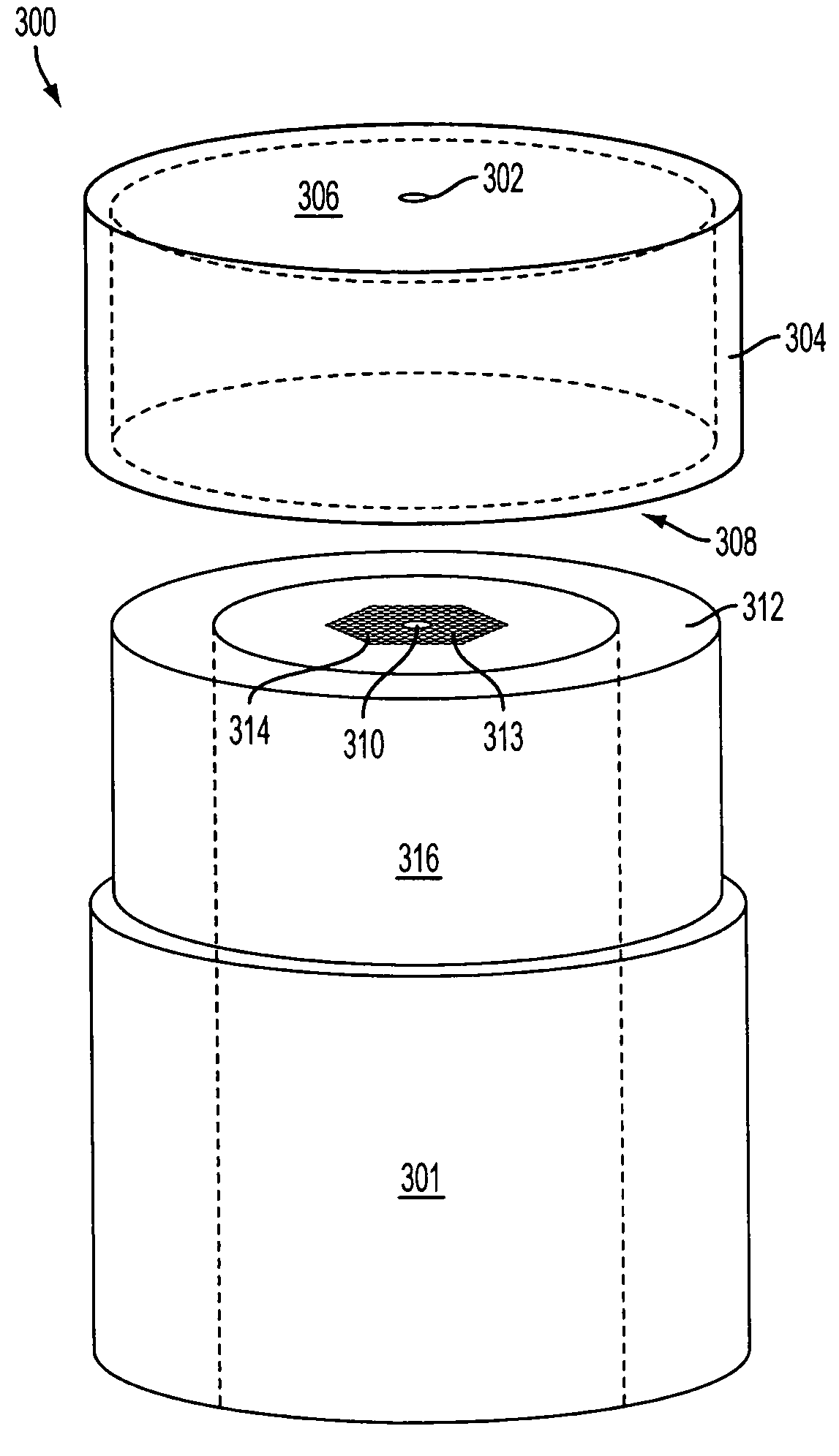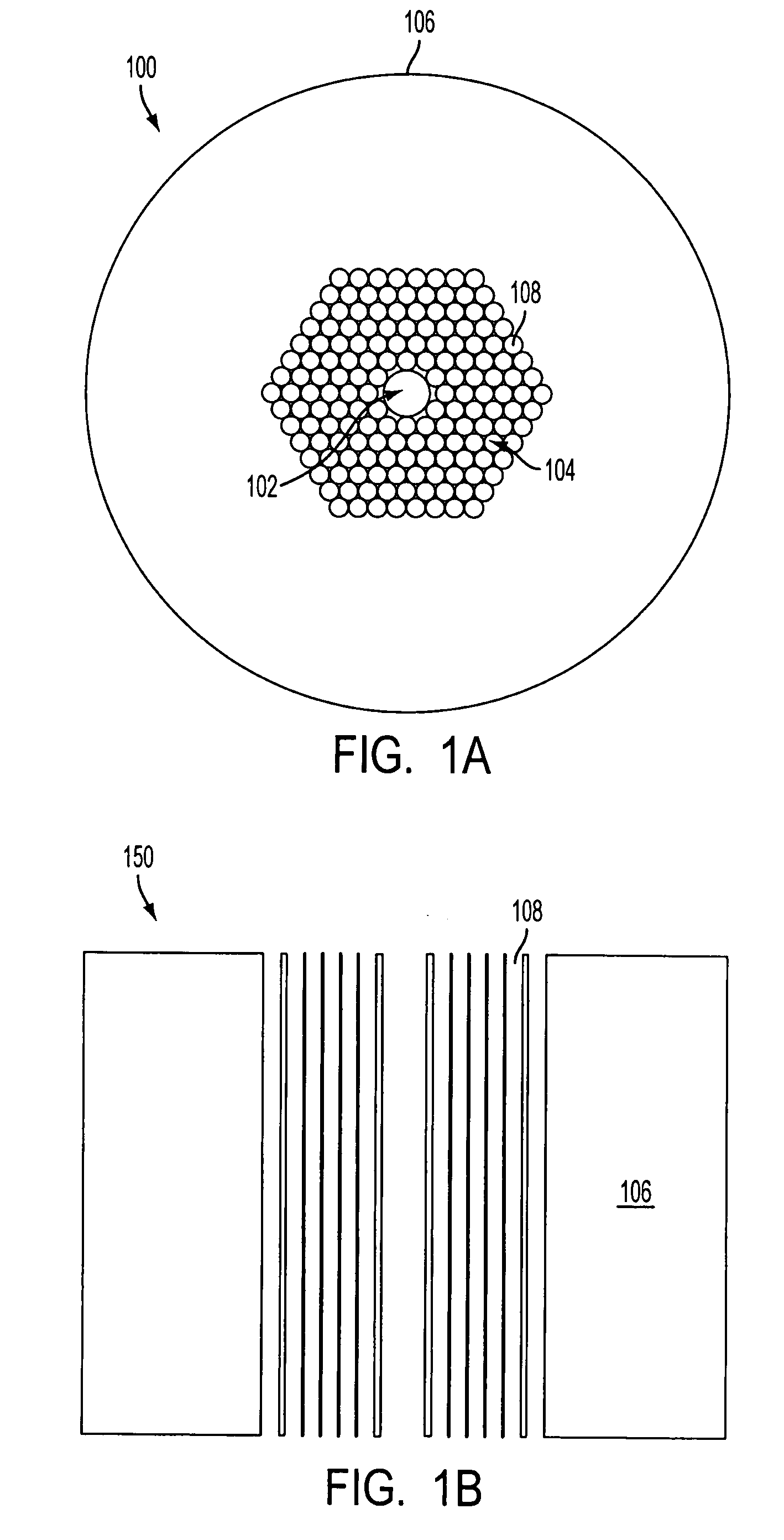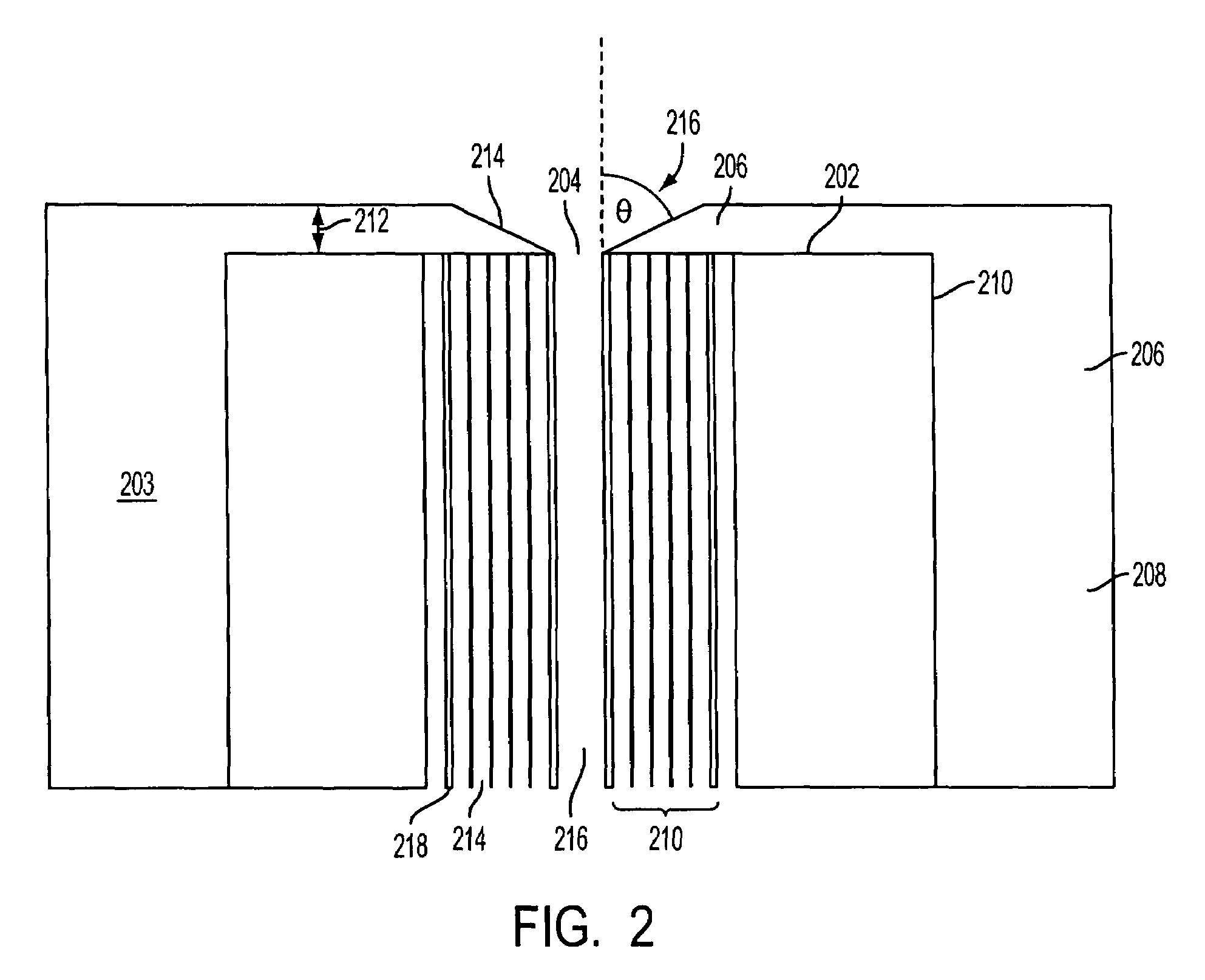Optical fiber clad-protective terminations
a technology of protective terminations and optical fibers, applied in the direction of optics, optical waveguide light guides, instruments, etc., can solve the problems of fibers not being able to transmit well, laser misalignment or beam shift risk, damage or complete destruction, etc., to achieve convenient connection to hardware, fiber termination structure is cheaper, and the effect of being durabl
- Summary
- Abstract
- Description
- Claims
- Application Information
AI Technical Summary
Benefits of technology
Problems solved by technology
Method used
Image
Examples
Embodiment Construction
[0014]This invention pertains to an optical fiber termination structure to eliminate and / or reduce damage to an optical fiber, including a region of the fiber containing multiple longitudinal channels separated from each other by thin walls, as thin as on the order of 150 nanometers, the channels surrounding a fiber core. The core can be hollow or solid and the purpose of the channels is to confine the optical signal to the core region.
[0015]The optical fiber material can be any material that the fiber can be made of including, but not limited to, glass, plastic and metal or alloy. In a preferred embodiment, the material is a chalcogenide glass. The core of the fiber can be solid but is typically hollow, filled with air or some gas, at higher than atmospheric or at atmospheric pressure, or it can be a vacuum. Laser induced damage threshold for air at 1 μm wavelength in a hollow core has been reported to have maximum measured intensity of about 1014 watts / cm2 at a low (e.g. 10 Torr) ...
PUM
 Login to View More
Login to View More Abstract
Description
Claims
Application Information
 Login to View More
Login to View More - R&D
- Intellectual Property
- Life Sciences
- Materials
- Tech Scout
- Unparalleled Data Quality
- Higher Quality Content
- 60% Fewer Hallucinations
Browse by: Latest US Patents, China's latest patents, Technical Efficacy Thesaurus, Application Domain, Technology Topic, Popular Technical Reports.
© 2025 PatSnap. All rights reserved.Legal|Privacy policy|Modern Slavery Act Transparency Statement|Sitemap|About US| Contact US: help@patsnap.com



